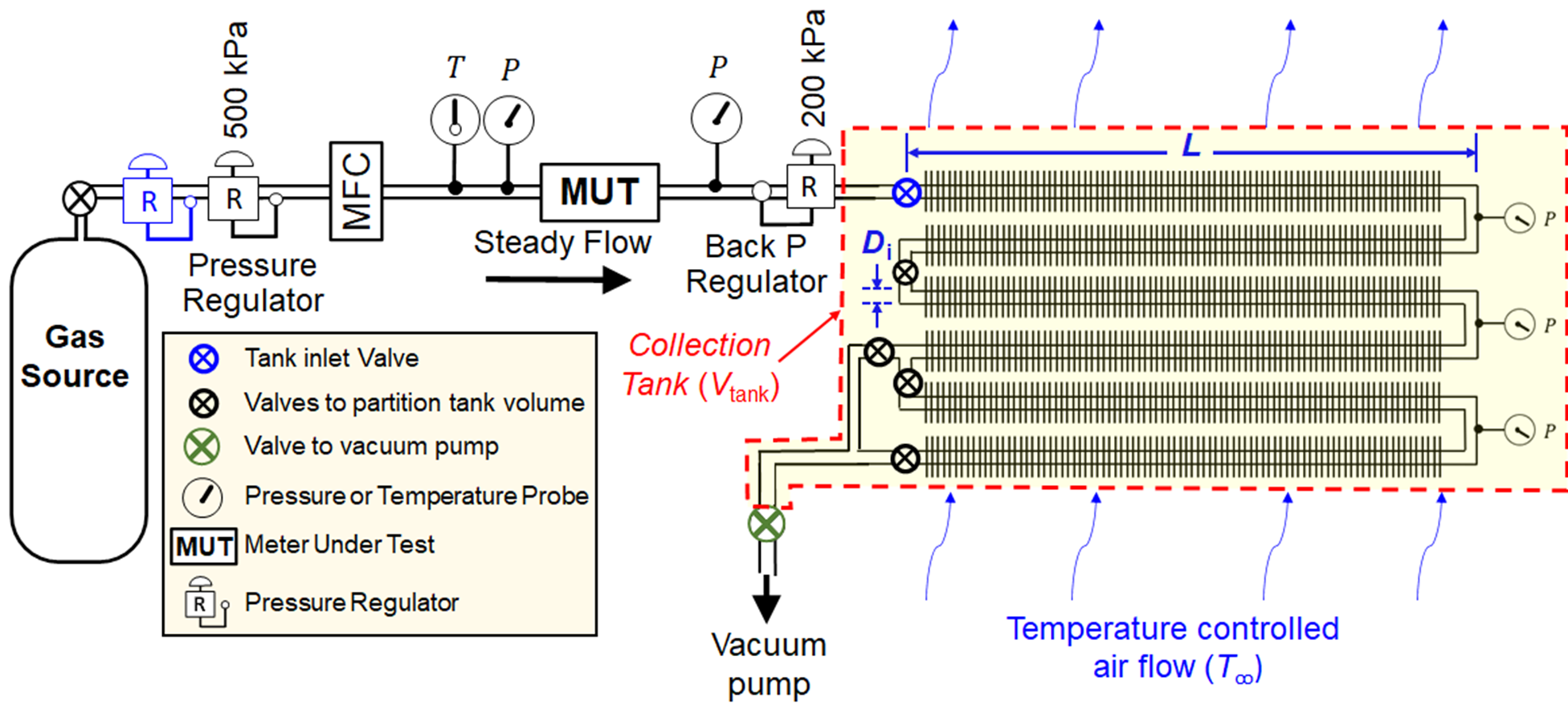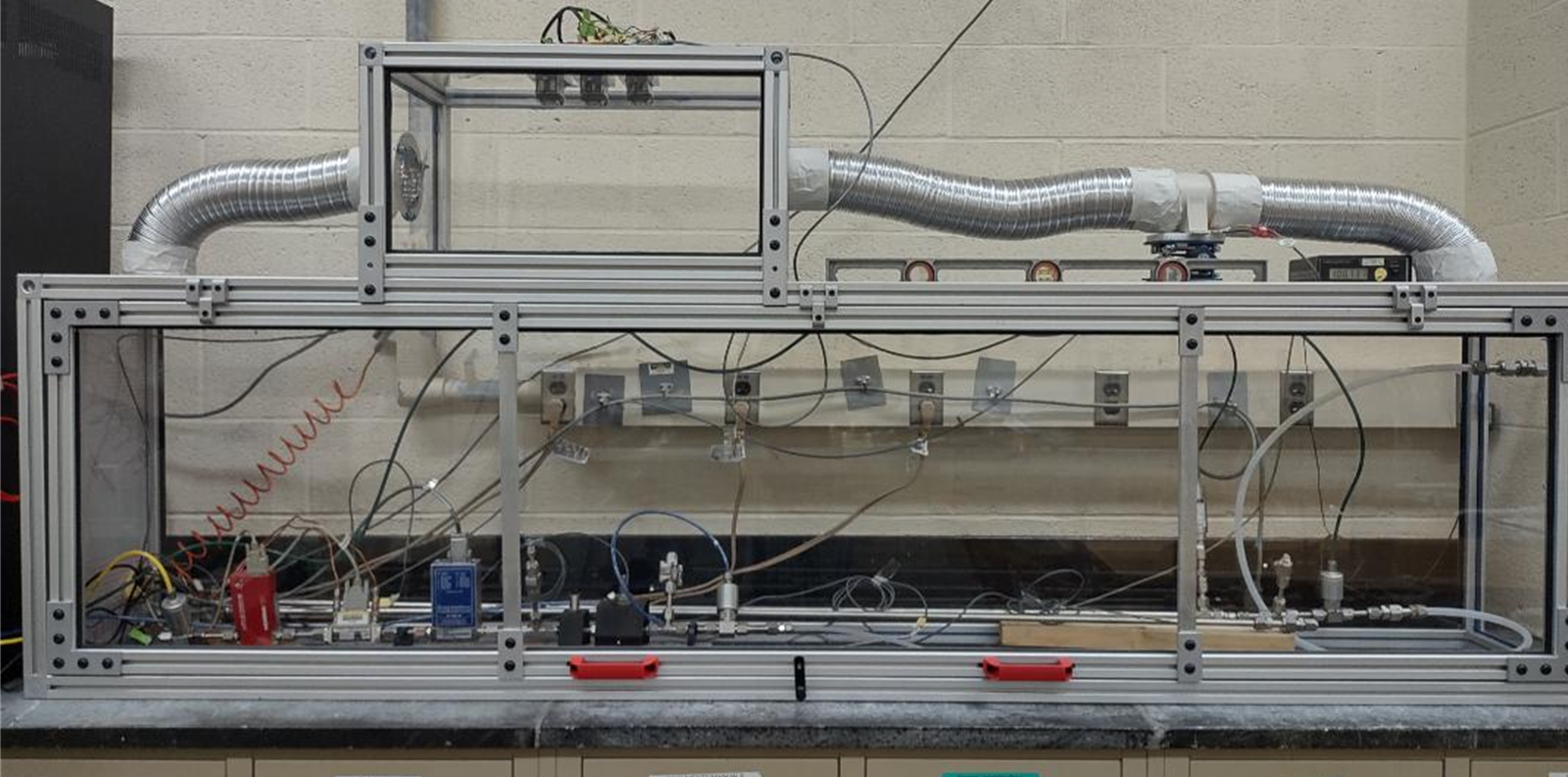SLowFlowS: A New Standard for Improving Flow Measurements of Semiconductor Process Gases
The Technology
NIST researchers are developing a new standard for calibrating devices known as mass flow controllers (MFCs), which are widely used in semiconductor fabrication. MFCs both measure and control the flow of gases that are used to make chips. Accurately calibrating these devices is a critical step in manufacturing chips with a minimum of defects.
The new standard, which draws on NIST’s extensive experience in the field, is called the Semiconductor Low-Flow Standard, or SLowFlowS. The goal of this standard has two components. The first is to cover lower flow ranges than existing gas flow standards. The second is to develop physical models for MFCs (using accurate data on gas properties) so they can be calibrated properly for inert gases such as nitrogen yet also perform accurately with hazardous gases typical in semiconductor manufacturing processes.
As semiconductor manufacturing advances, the requirements for MFC performance are increasingly strict: Even slight variations in the gas flow rate can significantly increase the number of defective chips in the final production yield. In the year 2000, it was acceptable to have a flow uncertainty of 1% of full scale (i.e., the maximum flow rate). Now 0.1% is desired — which is challenging for conventional MFCs.
Moreover, the industry requires interchangeability of MFCs: If one fails, workers need to replace it with another that has been calibrated to provide exactly the same flow behavior in order to successfully apply the same chip manufacturing recipe. In addition, chip manufacturers require new process gases, lower flows, and better response times from MFCs to support new chip technologies.
SLowFlowS is designed to meet those needs. It uses the rate of rise method, which measures how much the mass of gas changes over time in a collection volume as it is filled via a flow meter under test. The mass of gas is calculated from time-stamped pressure and temperature data gathered from the known collection volume as it is filled.

Advantages Over Existing Methods
Each model of MFC includes gas correction factors. These are typically simple multipliers to convert, for example, a calibration in N2 to another gas. However, for many gases, a simple multiplier is grossly inadequate to correct the performance of the flow meter. The MFC calibration curve is complex and poorly understood for many gases of interest (SF6, C4F8, NF3) in chip manufacture, partially because of (1) a lack of primary flow standards that can safely handle toxic gases and (2) a lack of low-uncertainty gas property values.
SLowFlowS can experimentally validate physical models for the relevant flow meters when accompanied by accurate gas properties (e.g., viscosity, density, specific heat, thermal conductivity). It will ultimately allow the chip industry to extrapolate a nitrogen gas calibration to the new, often toxic gases used to produce semiconductors.

NIST’s Fluid Metrology Group has state-of-the-art standards for realizing accurate measurements of gas flow: the 34 L and 677 L pressure-volume-temperature-time (PVTt) systems. These primary standards measure mass flow from 0.1 sccm (standard cm3/min at 274.15 K and 101.325 kPa) up to 2 × 106 sccm with expanded uncertainties ranging from 0.015% to 0.025% for N2, Ar, CO2, He and air. SLowFlowS will lower the flow range capabilities to 0.01 sccm with a target expanded uncertainty of 0.1% or less and allow for calibration of meters in hazardous semiconductor gases. Calibration data generated by the system will be used to develop physical models that characterize how gas species affect flow.
Applications
SLowFlowS will provide low-uncertainty flow measurements for the wide range of temperature, pressure, flow, and gas species necessary for semiconductor manufacturing. Reproducible flow measurements are critical to enabling high yields during multimillion-dollar chip fabrication runs.
Physical models will be developed for the relevant flow meter types so that safe calibrations can be extrapolated to hazardous gases with low uncertainty. Note that this will require accurate measurements of physical properties (density, viscosity, heat capacity, and thermal conductivity) for the relevant gases.
Key Paper
J. Wright, T. Cobu, R. Berg and M. Moldover. Calibration of Laminar Flow Meters for Process Gases. Flow Measurement and Instrumentation. June 2012.
Related Projects
Contacts
-
(301) 975-4586

